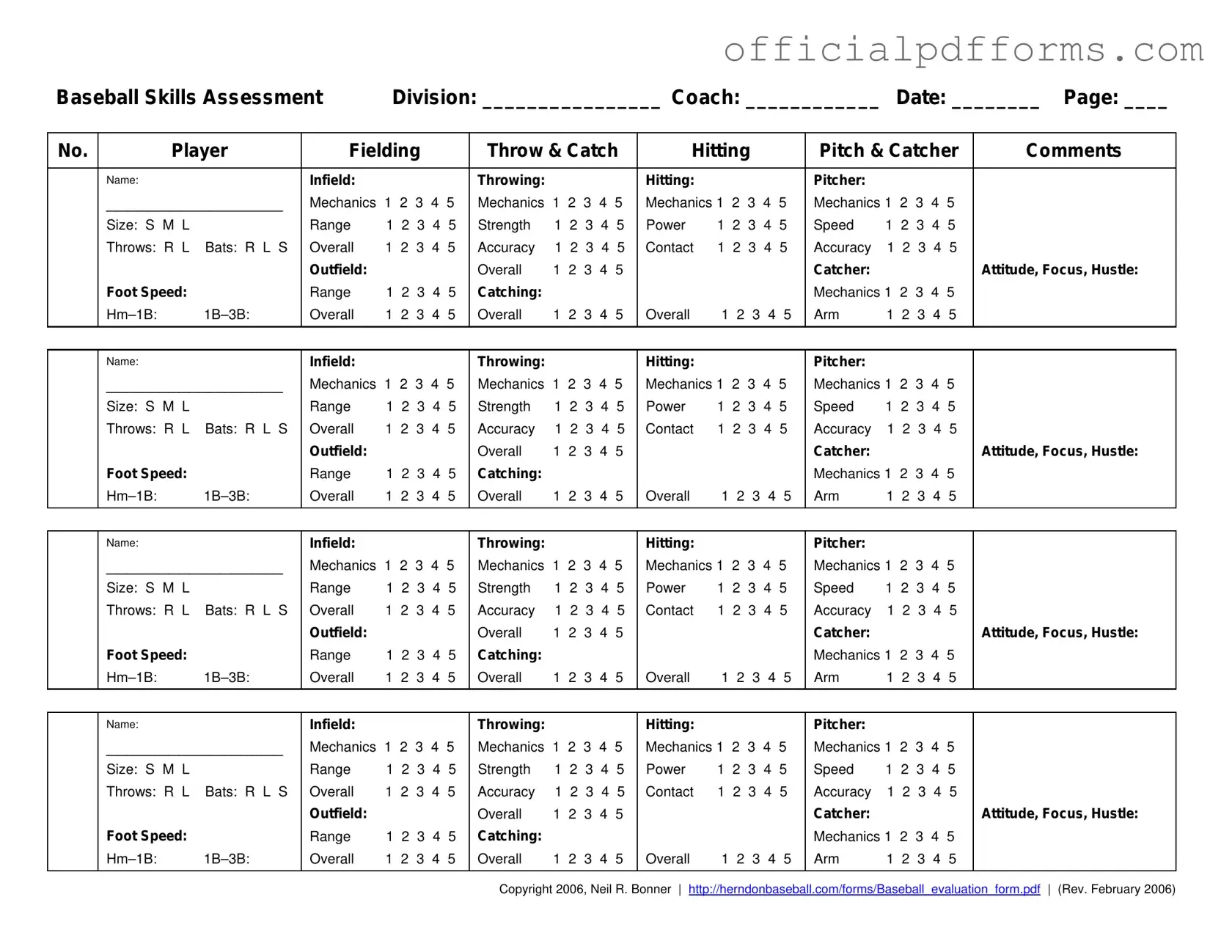Fill in a Valid Baseball Assessment Form
The Baseball Assessment Form is a structured tool used by coaches to evaluate players' skills during tryouts. It covers essential areas such as fielding, throwing, hitting, and pitching, providing a comprehensive overview of each athlete's capabilities. By utilizing this form, coaches can ensure a fair selection process for teams, making informed decisions based on players' performances.
Ready to assess your skills? Fill out the form by clicking the button below!
Access Form Online
